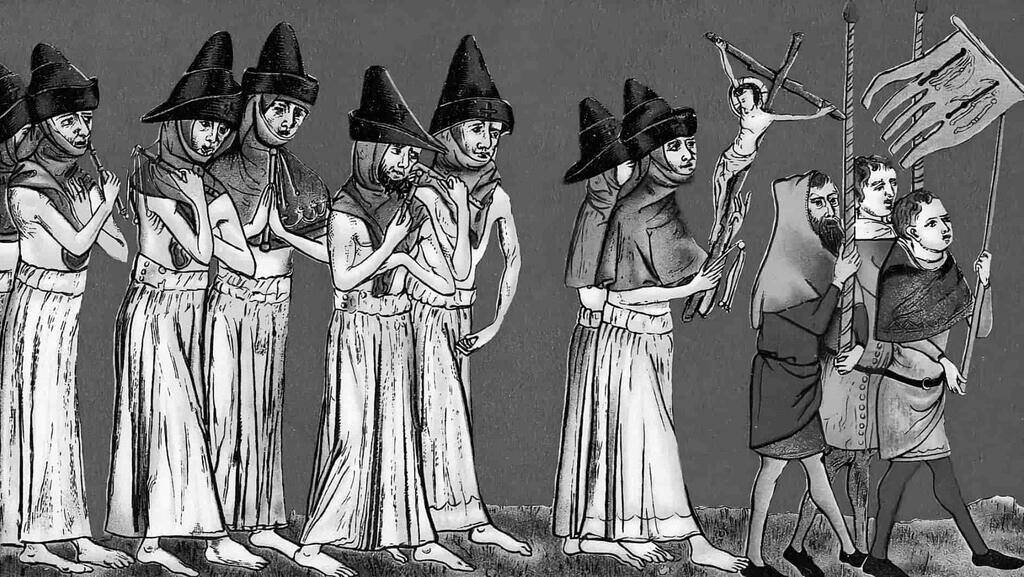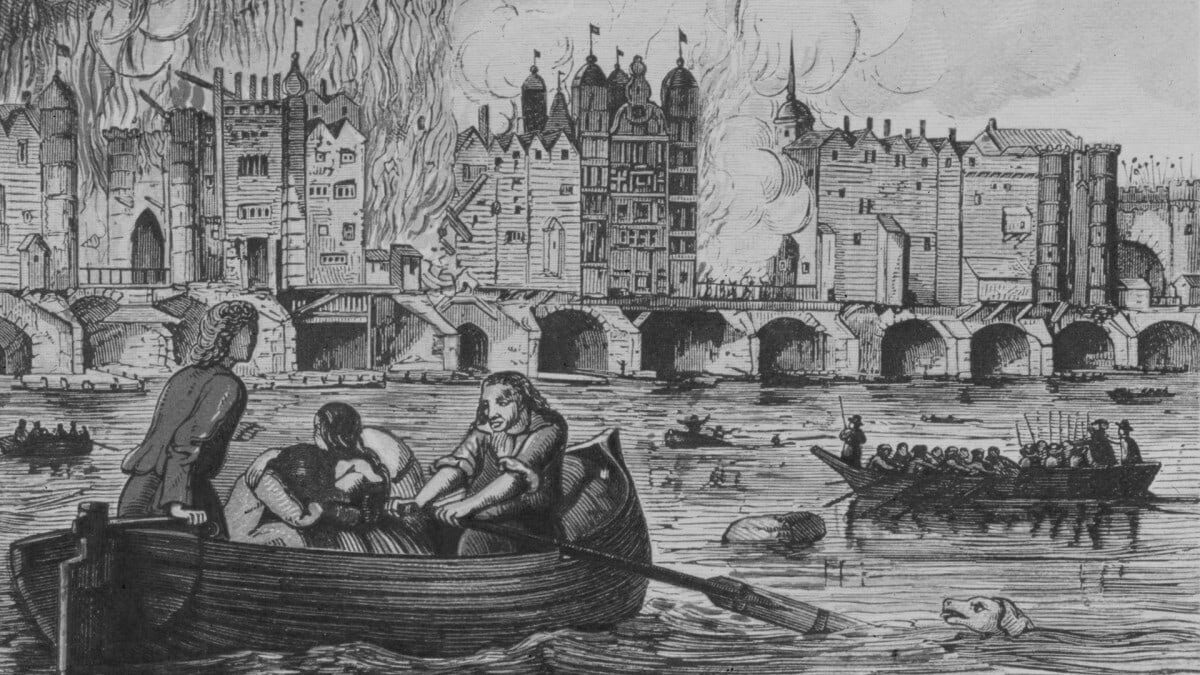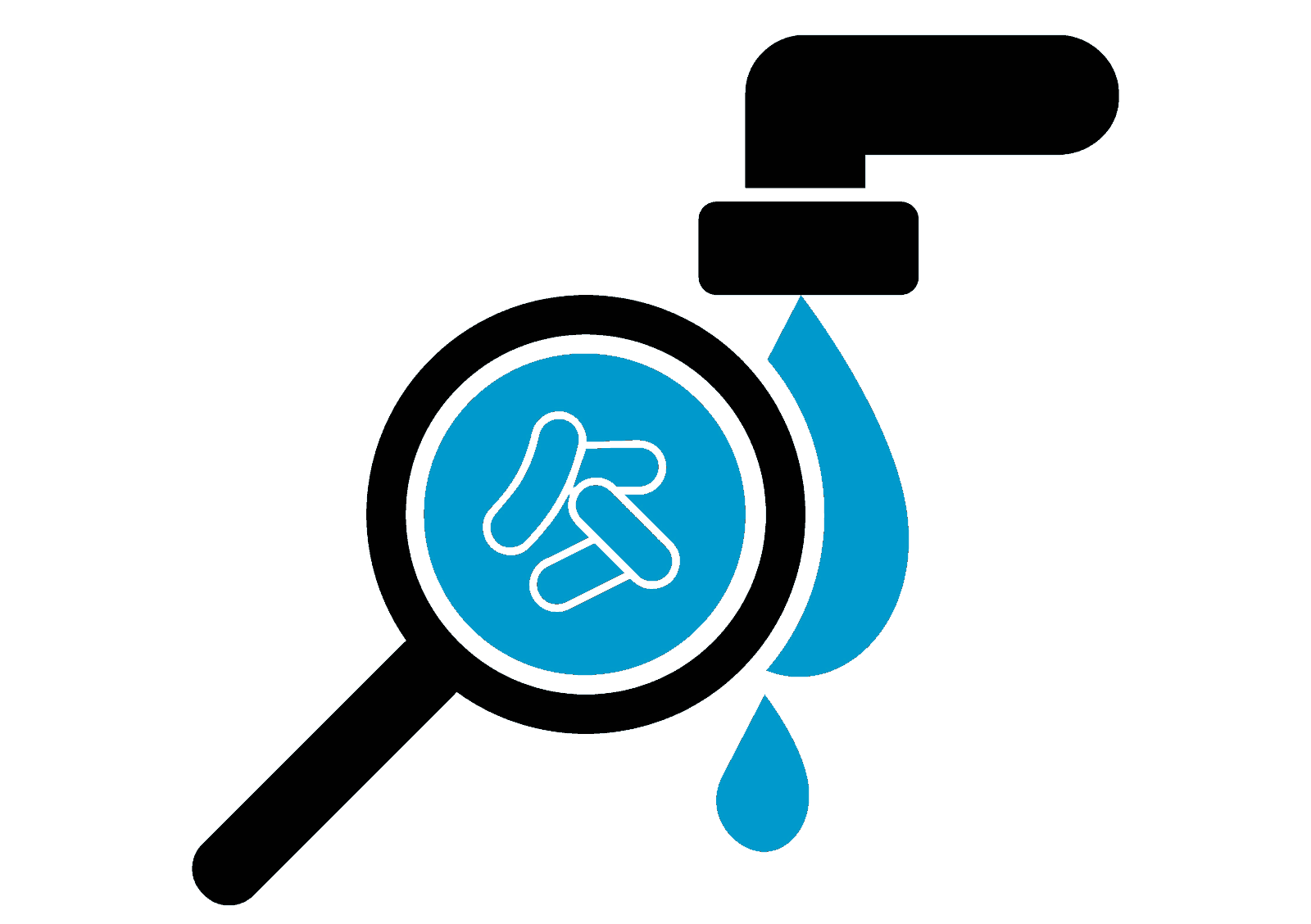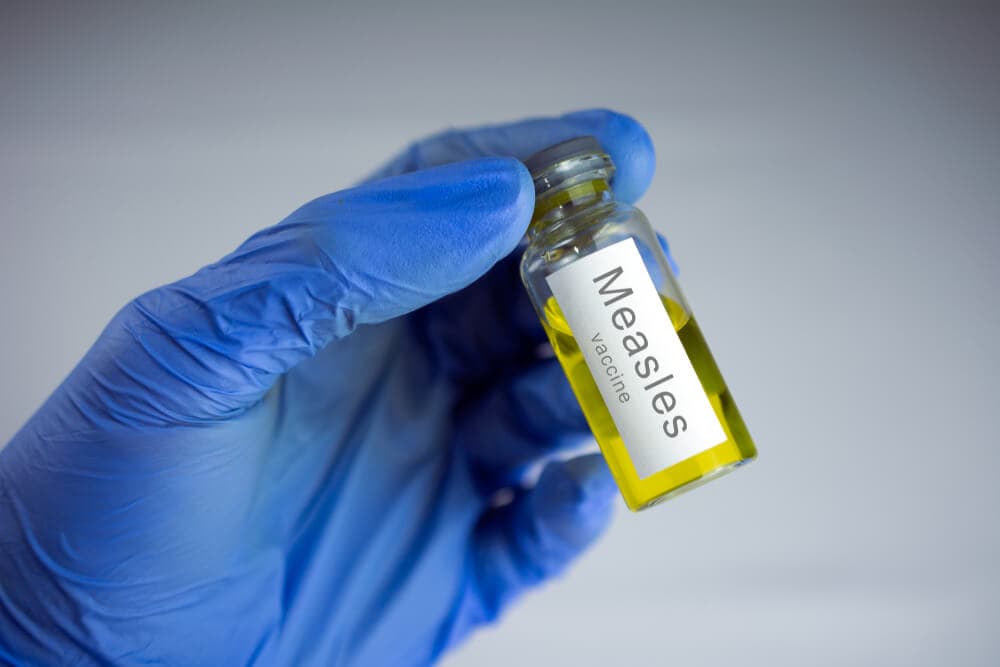The current crisis has everyone thinking about how to protect themselves and other people from becoming sick. For many people, the answer to this is to look for the experts, the scientists who study illness and try to find antibiotics and cures for people. Other people are looking more into the past – the history of pandemics and how science helped in those moments.
It’s something that many people don’t think about. You know about the flu pandemic of 1918 or the Black Plague, but do you know how the world overcame these situations? Have you ever looked at how science helped the population back then just as it’s helping now? This article is here to give you the history of the past crises and the scientific breakthroughs that helped stop them. Psychologically, it’s helpful to know this history as it gives you more hope that we will get through the current crisis.

The History of Outbreaks Starts Over 5,000 Years Ago
It’s hard to think of the ancient days, the world over 5,000 years ago, but it’s important when looking at the history of these events because they’ve occurred since the beginning of time. While history cannot tell us when the first one happened, historians do know that a whole prehistoric village in China was wiped out about 5,000 years ago. They discovered this after finding hundreds of human bones in the basement. Archaeologists stated the only explanation was some sort of illness, as people of all age groups were buried in this mass grave.

Today, the house no longer stands, but the location is considered one of the best-preserved prehistoric sites in northeastern China. It’s called the “Hamin Mangha,” and experts state that when this mysterious illness entered the area, it wiped people out so quickly that they couldn’t correctly bury the deceased. One reason why scientists believe it was a widespread illness, is that they discovered another burial site from around the same time in northeastern China.

Scientific Advancements Are One Reason The World Doesn’t Face Pandemics Often
New diseases seem to pop up often. Part of this is because cold and flu strains are always changing, which brings about new viruses and bacteria to fight off. Fortunately, scientists are quick to discover new antibiotics and other solutions to help decrease the symptoms or prevent people from becoming ill. This is also a reason why the world doesn’t see as many outbreaks, such as the current crisis, happening regularly.

History proves that they used to be more common, even if they remained in one country as people didn’t travel back then like they do now. Without scientific advancements, the regular cold would seem more like a challenge every year than a typical cold you live with for a couple of weeks.

Scientists Learn From The Past
One reason you need to focus on the past is that scientists learn from past viral events. They study the ways previous scientists helped fight off specific crises, like Ebola or even the Athens Plague of 430 B.C. While Athens didn’t have the study of science set up like the modern era, they still had people who worked hard to try to save as many people as possible.

When looking at the Plague of Athens in 430 B.C., scientists note that one of the biggest problems they faced was overcrowding. It’s believed that if Ancient Greeks stayed further away from each other, the number of people who perished wouldn’t be as high. Another reason scientists point to an increase in the speed of the plague spreading is that Athens was in the middle of a war, which forced many people to take refuge close to each other.

Scientists Have Faith, But Also Think Of The Worst-Case Scenario
It’s not something that many people like to do. They don’t want to think of the worst-case scenario that can happen when it comes to something like the current crisis. However, scientists do, and they urge other people to for several reasons. First, they want to know how bad it can get. In other words, they want to know what they are up against. Second, they want people to understand how bad the situation can get if they don’t take precautions. Third, it helps scientists they can understand what direction to consider when it comes to prevention and solutions.

It’s this type of thinking that kept something like the current situation away for so many years and quickly ended the H1N1 pandemic of 2009. Therefore, once the current crisis started in China, scientists immediately got to work by thinking, “Just how bad can this situation get?” They had faith that they can keep the situation from getting to that point by taking action immediately and gathering as much information about the illness as possible.

Scientists Learned A Lot From H1N1
The current situation is not the first time you’ve dealt with this type of outbreak. However, because it’s all over the media and people went into panic buying, it’s one that you’ll remember for a long time. There are many factors that scientists couldn’t stop in time, but there are also some factors that they could stop. Social distancing is a big key in this. The other is everything they learned from 2009’s H1N1 situation.

If you’re like most people, you just remembered the H1N1 or the Swine Flu, which lasted from January 2009 to August 2010. Today, many scientists credit this illness to their sharpened focus on past illnesses. The reason for this is that the H1N1 flu was a strain of the 1918 flu that took the world by storm. It’s at this moment that scientists noted that many strains we see today that create a crisis come from a previous strain from history.

Causes Can Originate From Anywhere
One of the most significant factors that scientists keep in mind when faced with a new pandemic is that the cause can come from anywhere. There are many cases, such as Ebola, where scientists believe the illness came from particular animals. While the Ebola pandemic didn’t start until a few years ago, scientists believe that the virus came from bats and originated back in the 1970s.

There are also diseases that mosquitoes carry all over the world; each illness is a bit different in its own way. We’ve had situations where you could get sick from eating a cow or chicken meat. Therefore, scientists know that they have to go into the case with an open mind so they can work efficiently. They don’t ignore any possibility because the past has taught them not to turn a blind eye to any situation.

Plague of Justinian With No One Left to Infect
Scientific testing is relatively new when it comes to history. In fact, it’s still considered in its infancy as scientists are continually working to find new antibiotics and develop tests so doctors can correctly assist patients. Scientists are incredibly thankful for the advancements in technology because they know that it wasn’t always the case. However, this doesn’t mean they don’t learn from plagues where people weren’t as lucky.

One of the deadliest plagues in history is the Plague of Justinian. It’s stated that the plague ended because there was no one else that could die from it. This plague proves to scientists that some people become immune to new viruses, but it’s still a question of why. They cannot answer this question for a plague that happened in 541 C.E., but they keep this discovery on the table every day as it helps guide them to a cure.

One Of The First Accounts Of Forced Isolation
The black plague is one of the most well-known events in history. It proves to scientists that the disease never really went away, it just remained hidden for decades and then changed in strain. The black plague, also known as the Black Death, hit Europe in 1347 and, within four years, claimed around 200 million lives.

People worked quickly to try to find ways to stop the disease, but then there was little medical advancement. But, just as scientists do today, they worked with what they could. Therefore, officials decided the best course of action was to force people to self-isolate. For example, people who came to Europe on ships were forced into isolation if they were sick. They could not touch land unless they were healthy. At first, the separation lasted for 30 days, but when the number of cases continued to climb, it turned to 40 days. This is the first time the word quarantine made its way into the Western world.

The First Virus Ended By A Vaccine Was Smallpox
Smallpox is a well-known epidemic that made its way across the world, specifically in Asia, Europe, and Arabia in the 15th century. It lasted centuries with medical experts of the time trying everything they could to stop the spread of the disease. Once people started to explore new lands, they brought smallpox with them, killing millions of people throughout history.

It wasn’t until the 18th century that Edward Jenner, a British doctor, noticed that milkmaids infected with a milder form of the virus known as cowpox became immune to smallpox. At this moment, science made a breakthrough by realizing that infecting someone with cowpox would make them resistant to the worst form of the disease. However, it wasn’t until 1980 that the World Health Organization announced that smallpox was no longer a threat to any society.

London’s Great Plague Sealed Up The Sick
London really couldn’t get away from the plague for good. The advancements in medicine and technology just weren’t around for this. People didn’t completely understand what made people sick; they just knew that it went from person to person. This is one of the biggest reasons why London authorities started believing that the best way to fight any disease that spread rapidly was to force people to stay indoors. However, it soon became apparent that this wasn’t enough.

By the 1500s, London’s population took a toll because of the plague, and they wanted to try anything to ease the death rate. Therefore, the country took the first steps in separating the sick and the healthy. If someone in your home became ill, it was marked with a bale of hay strung to a pole. When you went outside to gather supplies, you needed to carry the pole with you, so people knew to keep their distance.

London’s Great Plague of 1665
London definitely finds its way on this list with all of its plagues and breakthroughs with science to try to stop it with what they had to work with. As you read above, London practiced social distancing before anyone else. Another factor that they practiced in hopes of stopping the plague after over a couple of centuries of battling the disease was to end all forms of entertainment.

Remember, there were no televisions or radios at this time, so if they didn’t have any plays or activities, then they didn’t have entertainment. While parents worked hard to keep their children entertained with a few toys and chores indoors, no one could do anything that was considered a form of entertainment outside. Furthermore, at this point, if you were ill, you couldn’t leave your home at all. Your home was marked with a red cross to warn people you were sick.

Cholera Became A Public Health Victory
Just like today, doctors centuries ago work tirelessly to try to find cures and medications to help fight disease. While they didn’t have what we do now to help them, it didn’t stop them from doing what many believed was impossible. One proof of this is early- to the mid-19th century cholera epidemic. It came to England during this time and killed thousands of people within a short amount of time. The mind behind the victor of Cholera is British doctor John Snow.

Snow noticed that within days of getting sick, people died. In fact, thousands of people died within days, and this told Snow that the only logical explanation was London’s drinking water. He knew that thousands of people needed to become infected with the disease within a short amount of time, and he could only think of the water people drank, so this became Snow’s starting point.

John Snow Saved Thousands Of People
No one understood how to stop Cholera from killing people. Within days thousands of people became sick and died. The numbers continued to increase every day and left many people without options when it came to burial, so they buried the deceased in mass graves. Medical doctors worked endlessly to help patients and find a way to limit exposure, but the doctor who maintains credit for helping end the Cholera pandemic is John Snow.

Snow took to the medical records at hospitals like Sherlock Holmes during an investigation. He looked at everything possible and tried to make a connection to prove London’s drinking water was contaminated. He created charts that showed people became sick and, within ten days, succumbed to a mysterious illness. He then found that 500 people clustered around one area, next to a major city pump where they got water. He convinced authorities to remove the handle from the pump, which made it unusable. Shortly after, the disease started to vanish, and people started noticing the importance of urban sanitation.

Cyprian Plague
The Cyprian Plague is named after Christian bishop of Carthage, the first victim of the plague. People who became sick with this plague dealt with throat ulcers, fever, diarrhea, vomiting, and gangrenous hands and feet. People quickly became worried about this plague and tried to find ways to avoid it.

Most people decided to leave the city, but this didn’t mean that they didn’t catch the virus before they left town. In fact, all of this did was spread the disease around the world. This caused people, especially medical experts during that time, to realize the steps people shouldn’t take to run away from the disease. It also brought out ways that one country aided another country when it came to illness.

Leprosy During The 11th Century
The Middle Ages were known for their disastrous ailments. Other than plagues, during the 11th century, people started dealing with leprosy. Today, this is still an illness, though rare. But, back in the 11th century, people were quickly dying from the disease. It’s a disease that causes sores and deformities. At the time, many people felt it was a punishment from God. While this isn’t how people think today, we have a better understanding of the disease and how to care for it.

At first, people didn’t know how to handle leprosy. It was a painful disease, and all they could think to do was stay away from people they noticed were infected. Of course, this only led to spreading. Therefore, people came up with a new idea and made hospitals or places that could quickly turn into hospitals a shelters for people with leprosy. Everyone who became infected went there. While it didn’t cure the disease, it did help decrease the number of infections over time. Thankfully, today we have antibiotics to help stop the growth of leprosy.

Measles Vaccine
The first written case of measles comes from the 9th century. The disease only grew well into the 20th century, when it finally became a nationally notifiable disease. It was around this time that doctors really started working on a vaccine that would protect people from the disease. John F. Enders and Dr Thomas C. Peebles began collecting blood samples in 1954 and started isolating the virus within people to try to create a vaccine.

The process of developing a vaccine worked because nearly ten years later, it became available everywhere. The vaccine had been used before this, but it didn’t become a nationally registered vaccine until later. Medical advances improved the vaccine in the late 1960s, but doctors are still trying to do everything they can to work out a couple of problems, but measles is declared eliminated in some parts of the world.

Scientists Are Still Looking At A Vaccine For Measles That Will Benefit Everyone
Measles is a disease that medical experts are still working on. Fortunately, there are new studies that prove another breakthrough with the illness with hopes that people can take a more potent vaccine, so there is less of a chance to get sick with the disease. While there is a measles vaccine that seems to work, scientists are still baffled by how it protects some people but not others.

Over the last few years, scientists have noticed a pattern with people who develop measles even if they had the vaccine. One part of the pattern is that the immune system of some people doesn’t tolerate the vaccine as well. Many scientists believe this is because there is an underlying health condition at the time of the vaccine, but this remains inconclusive, and they’re still running studies.

Polio Vaccine
Polio is one of the most prominent diseases that caused many people to suffer during the 20th century. In fact, this disease isn’t that far back in history. Polio is an infectious disease that spreads via the fecal-oral route. It focuses on the central nervous system and usually causes muscle weakness that could lead to paralysis. Most people think of the 1940s and 1950s, but the disease came about way before then. It was during this time that doctors were working around the clock to try to come up with a cure or vaccine to help stop the spread of polio.

The first polio vaccine became available in the United States in 1955, but medical experts worked on the vaccine at least ten years before this time. The most significant breakthrough came in 1948 when John Enders from the Children’s Hospital Boston cultivated the poliovirus in human tissue. In 1952, Jonas Salk and a team at the University of Pittsburgh developed the first effective vaccine and successfully tested it on a group of adults in children the following year.

Avian Flu Viruses – The Asian Flu
The most well-known Avian Flu virus that people remember is the Asian Flu, which started in 1957 and continued until 1958. It began in China and became linked to chickens and other birds. People who ate meat from infected birds had a high chance of developing the flu within a few days. In total, about 1.1 million lives were lost by the end of 1958. While some people had only minor symptoms that made it seem like a regular cold or flu, such as a cough and mild fever, other people struggled with life-threatening symptoms.

Once scientists understood where the Asian Flu came from, they could start focusing on tests to help find the birds that are affected, so people don’t eat that meat. On top of this, scientists also noted that people possessed protective antibodies that were similar to other influenza strains. This helped scientists develop the H2N2 vaccine which helped treat secondary infections and limited the spread of the pandemic

Yellow Fever
The Yellow Fever first started working its way around the globe during the 1700s. In the United States, the primary location in 1793 was Philadelphia, Pennsylvania. The population was overcrowded, and it became an increasingly hot summer, which brought more mosquitoes than usual. The biggest problem with this is that mosquitoes carried the virus. By the time winter came and the mosquito population died, over 5,000 people passed away from the virus.

It wasn’t during this time that scientists began looking at ways to prevent another Yellow Fever outbreak. This happened when they realized that Yellow Fever is transferred from person to person. However, by this time, it was a global pandemic killing hundreds of thousands of people every year. Scientists also realized that by the time someone became infected with the disease, there was no cure. Therefore, prevention was the answer. Vaccines started around 1912, but the breakthrough came during the 1930s when the development of the 17D vaccine by South African microbiologist Max Theiler. However, it was not recommended as a vaccine until 1961 but is still in use today.

Diphtheria Starts To Decline Thanks To A Vaccine From 1923
Diphtheria now has a vaccine that is given to babies but is also available for children, teens, and adults. It’s the only way to prevent yourself from the disease that causes a neck to become swollen due to swollen glands. People also have a fever, sore throat, and weakness. It’s a respiratory illness that is caused by bacteria, which produces a poisonous toxin.

Before the 1920s, Diphtheria was a common illness that claimed the lives of millions. However, this would all start to decline during the 1920s when French scientist Gaston Ramon took control of developing a vaccine to help stop the spread of the illness. He inactivated the bacteria by heating and treating them with a substance called formalin. Basically, this vaccine infected people with a low dose of Diphtheria so they could produce antibodies that helped fight off the disease.

